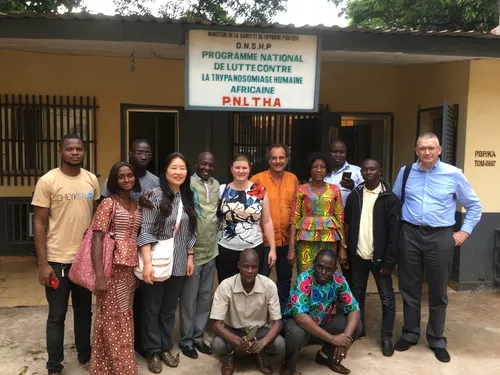HAT Modelling and Economic Predictions for Policy (HAT MEPP)
What is HAT MEPP?
Human African Trypanosomiasis Modelling and Economic Predictions for Policy (HAT MEPP) is an international, multidisciplinary research project funded by the Bill and Melinda Gates Foundation to support planning and implementation of gambiese HAT (sleeping sickness) interventions through the use of mathematical modelling predictions and economic analyses. The team of modellers and economists, led by Dr Kat Rock at the University of Warwick, will work with key partners in HAT-affected countries to develop regional, policy-ready modelling frameworks and produce predictive results that support decision-makers in the national control programmes.
The project has three main outcomes which directly relate to HAT control and elimination:
- Improved, evidence-based decision-making for HAT interventions by country programmes based on mathematical models and economic evaluation.
- Delivery of cost-effective HAT elimination strategies by national programmes
- Implementation of a new diagnostic tool for the end-game where appropriate
To achieve these outcomes HAT MEPP has three aims:
- Provide strategy guidance for in-country programmes. This broad category covers assessment of past interventions, supporting analyses of on-going strategies (specifically the BMGF-funded TrypElim and Trypa-No! projects) and providing decision support for future in-country programmes.
- Support the BMGF HAT elimination/eradication investment case. The main elements of the investment case are to establish the epidemiological, operational and economic feasibility of elimination.
- Investigate new diagnostics and corresponding implementation strategies for the elimination end-game

HAT MEPP team members (Xia, Kat and Ron) with PNLTHA of Guinea
Economics of HAT
The African trypanosomiases are infectious, vector-borne, parasitic diseases of animals and/or humans with similar aetiology and epidemiology. Their history shows how a disease not only affected the evolution of humans but also the cultural and economic development of people in sub-Saharan regions. The distribution of trypanosomiasis in Africa corresponds to the range of tsetse flies and currently comprises an area of 8 million km2 in sub-Saharan regions. Gambiense HAT, the focus of our work, is a disease primarily of humans which is usually fatal; however the range of intervention tools available including diagnostics, treatment, and vector control make it a feasible candidate for elimination. Historical events of the 20th century demonstrate how a concerted approach of systematic case detection and treatment can control gambiense HAT, and how the disease can re-emerge when control measures are suspended, which triggered the last epidemic in the 1990s.
Health economics, especially cost-effectiveness, is a pragmatic tool for decision makers to allocate scarce health resources for control, elimination and eradication strategies of HAT in endemic areas. In order to support attainment of local elimination targets and the global elimination goals of WHO, the HAT MEPP economics team will collaborate with National HAT Programmes and the Trypa-No! and TrypElim projects to collect the costs and related information associated with every activity of intervention. This information will be used to create a cost repository, and evaluate the cost-effectiveness of potential strategies for elimination/eradication of HAT in Chad, Cote d’lvoire, Democratic Republic of Congo, Guinea and Uganda.
Funded by: BMGF
SBIDER people involved:
Project manager:
Sukhwinder Soggi
External project team:

